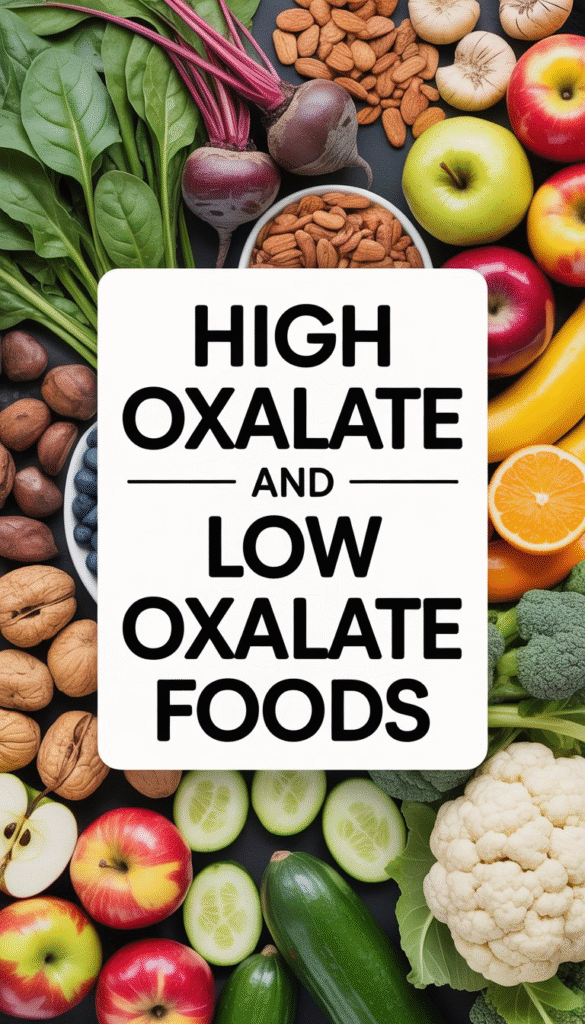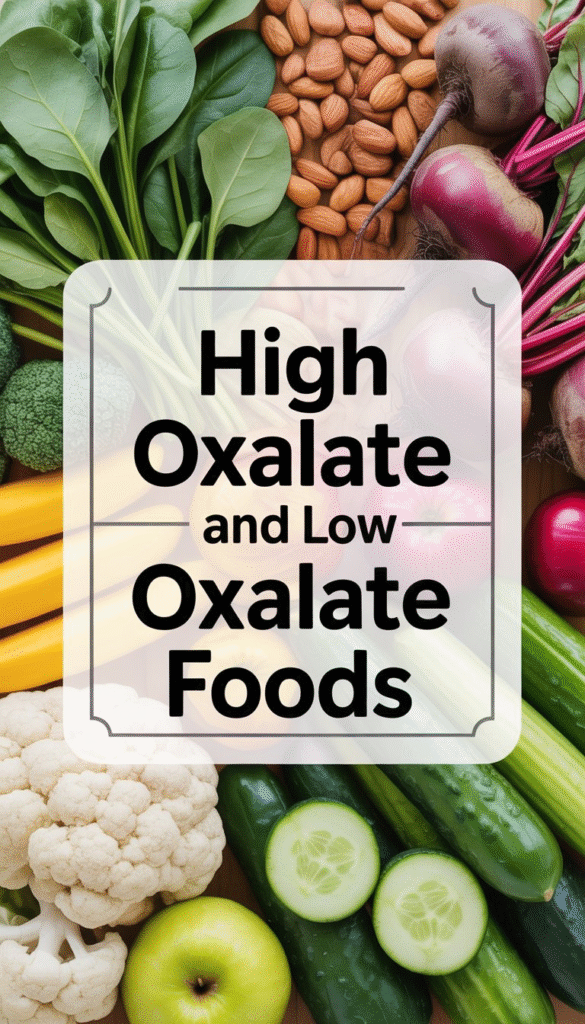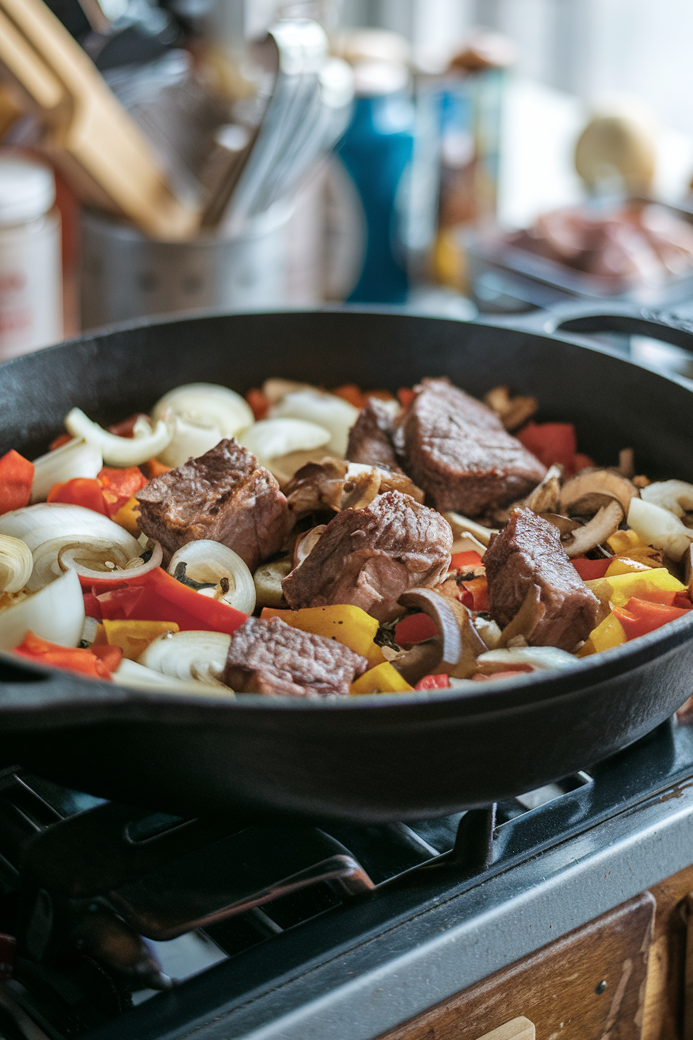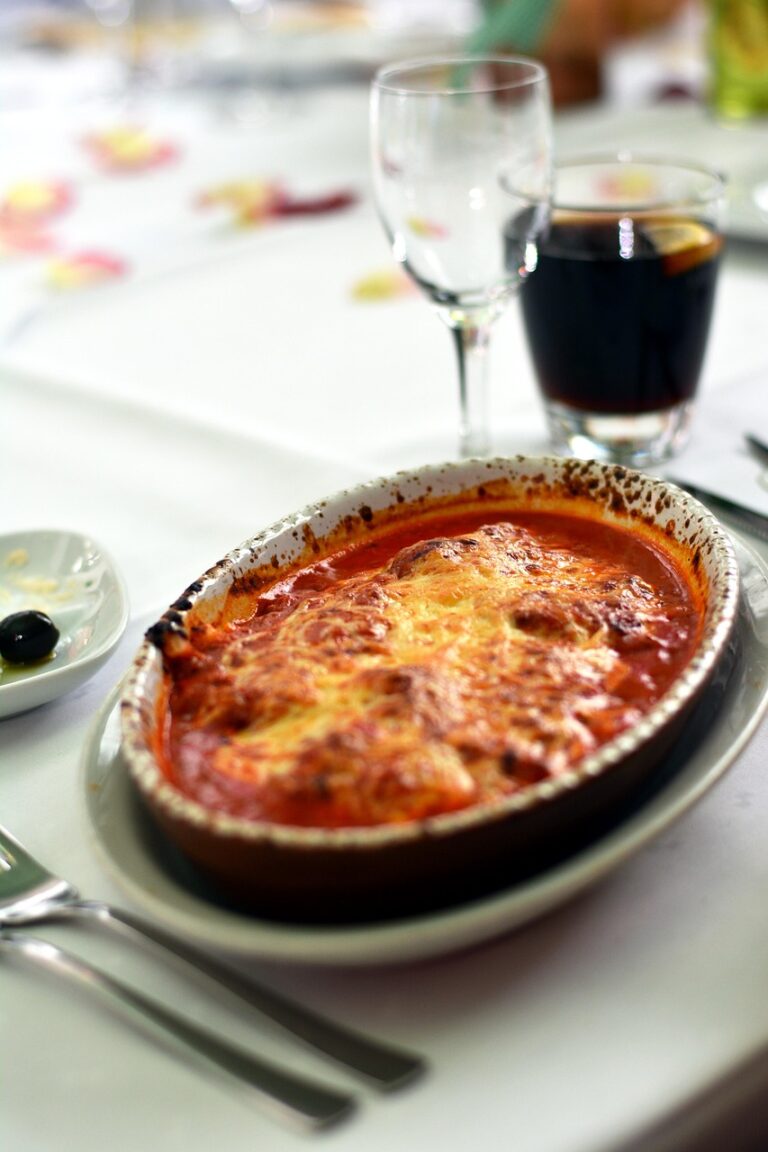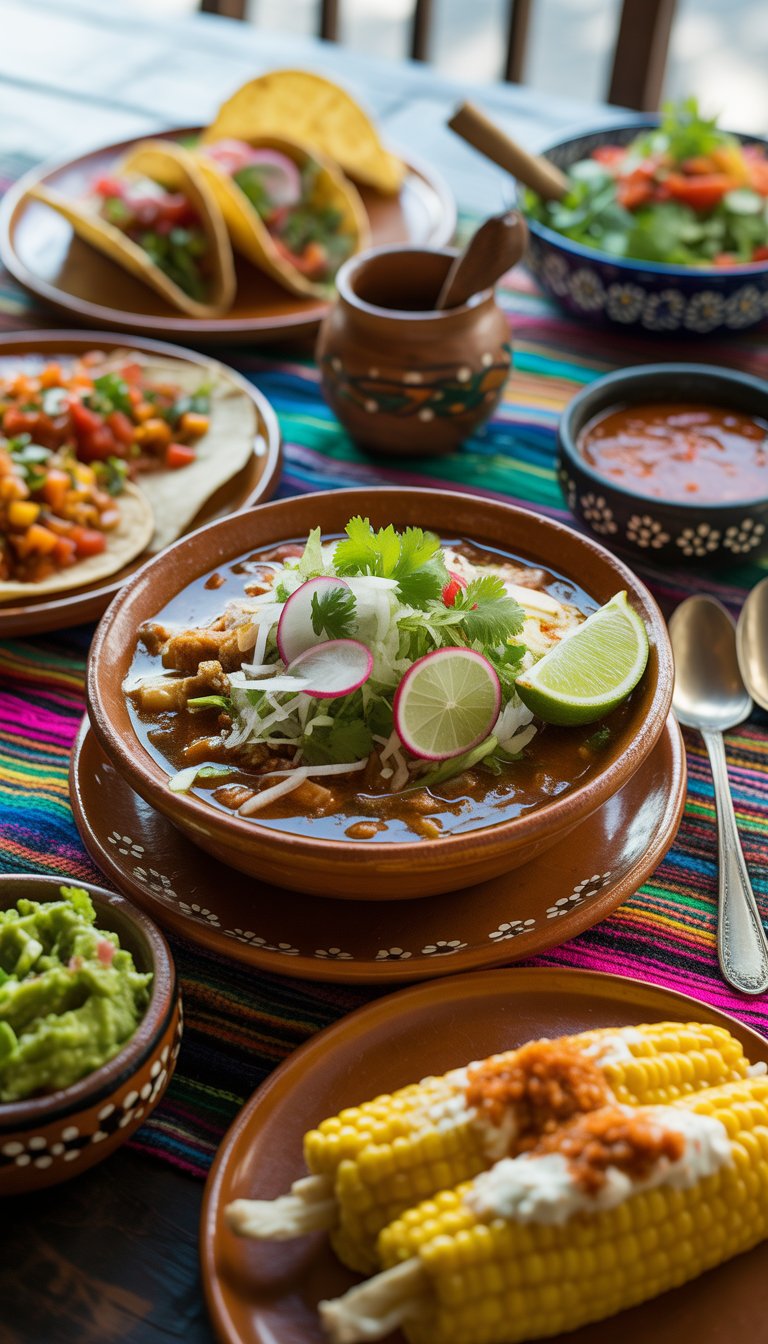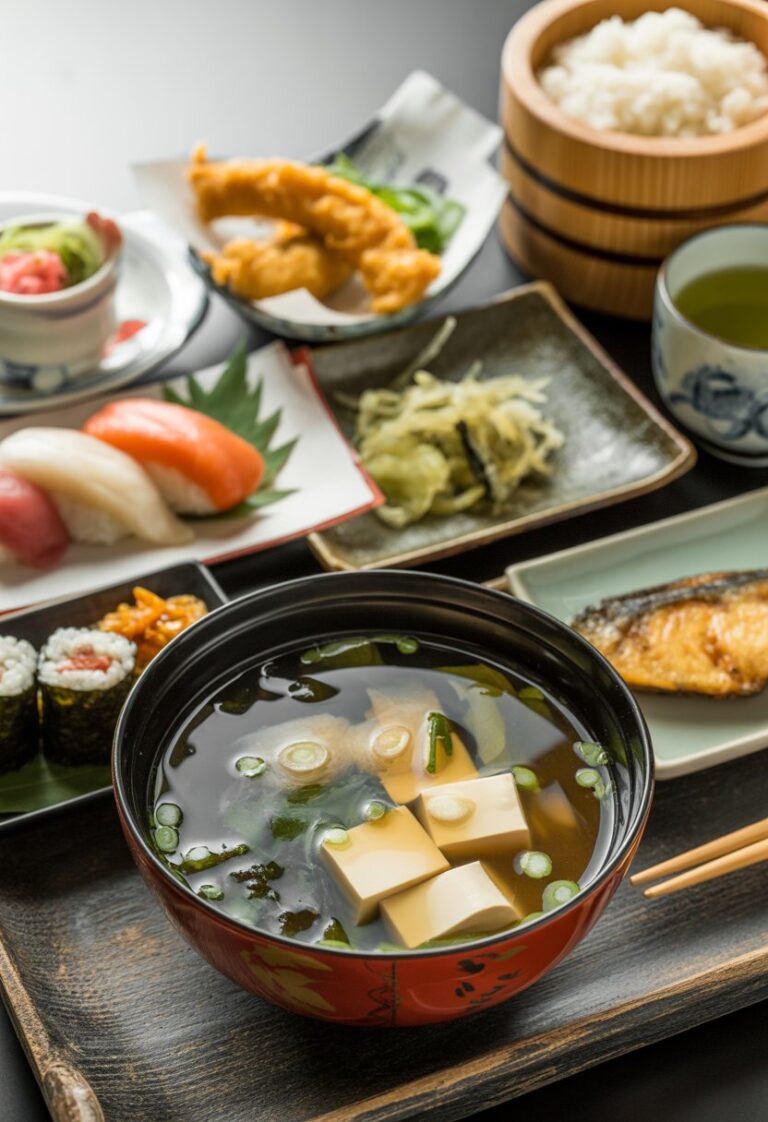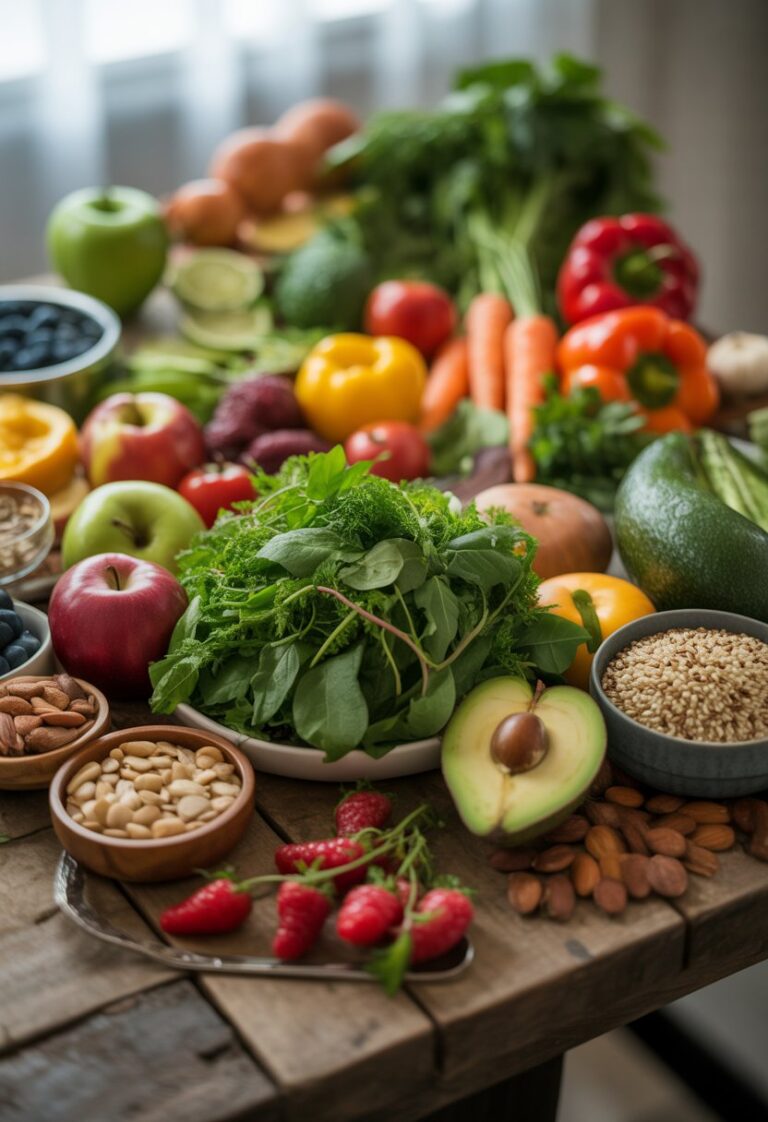High Oxalate and Low Oxalate Foods You Need to Know About
If you’re trying to manage your diet because of kidney stones or other health concerns, understanding which foods are high or low in oxalates is important. Oxalates are natural compounds found in many plant-based foods, and eating too many high-oxalate foods can sometimes increase your risk of health problems like kidney stones. Knowing the difference between high and low oxalate foods helps you make smarter choices about what to eat.
This post may contain affiliate links. For more information, please see our disclaimer.
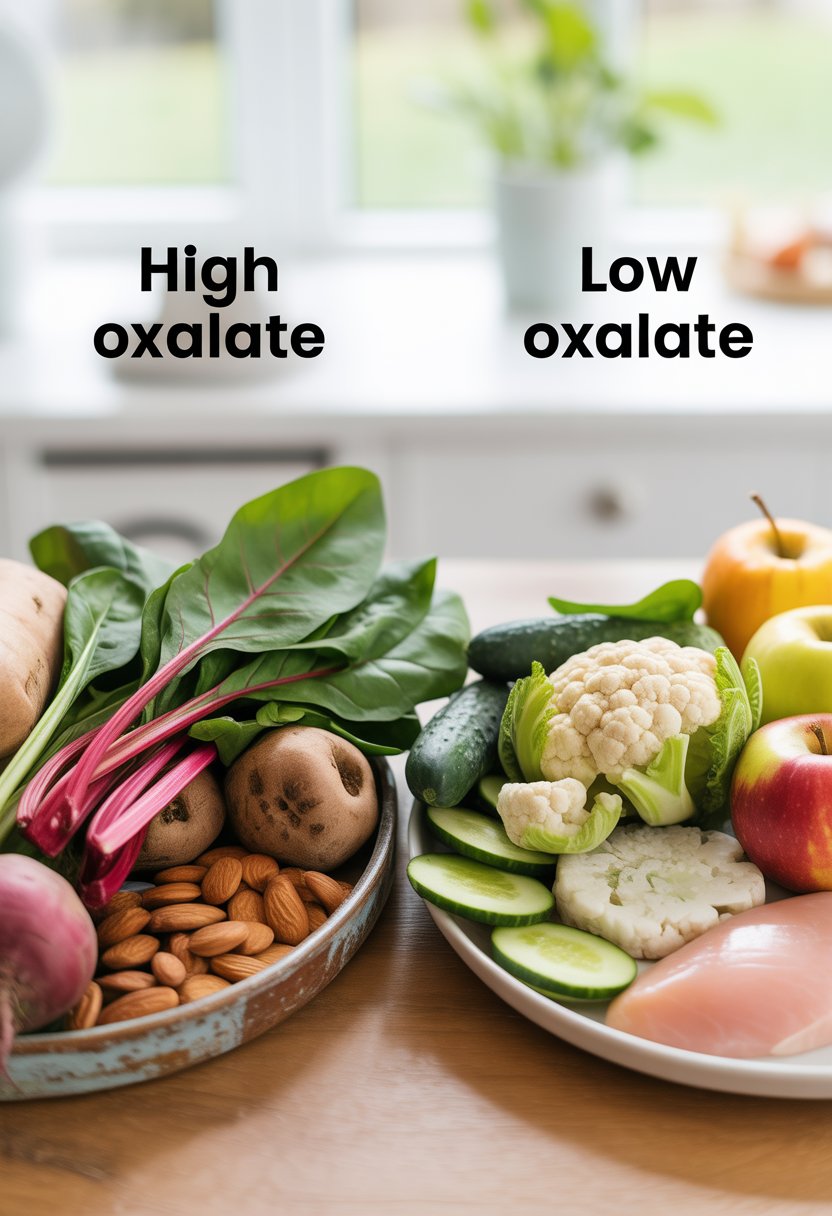
Foods like spinach, almonds, soy, and potatoes are high in oxalates, so you might want to limit them if you’re sensitive to oxalates. On the other hand, low oxalate foods offer safer options if you need to watch your intake.
By learning which foods fall into each category, you can create a balanced diet that supports your health without feeling like you’re missing out. This guide will help you spot the high and low oxalate foods so you can easily plan your meals.
Understanding High Oxalate and Low Oxalate Foods
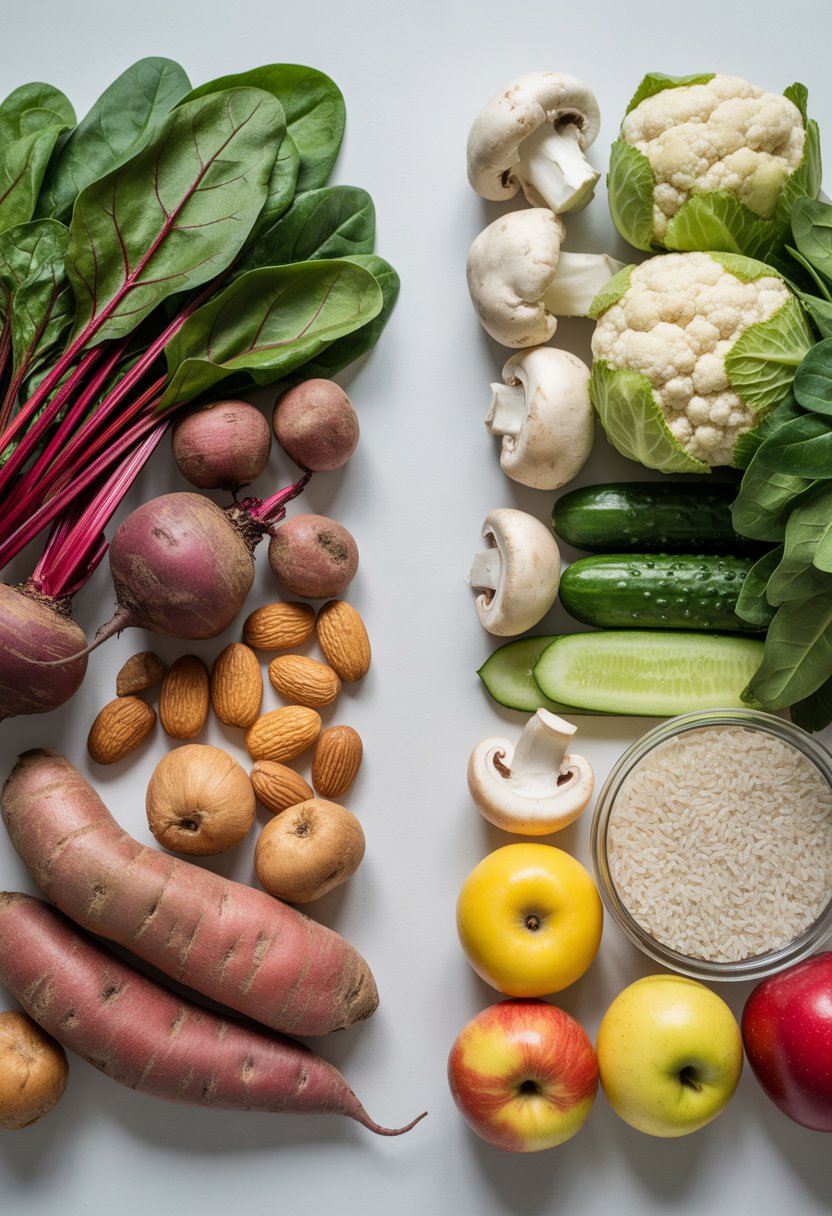
Oxalates are natural compounds found in many plant foods. Some foods have a lot of oxalates, while others have very few. Knowing which foods are high or low in oxalates can help you manage your diet, especially if you have kidney issues or want to avoid kidney stones.
What Are Oxalates?
Oxalates, or oxalic acid, are chemicals made by plants. When you eat foods with oxalates, they can bind to minerals in your body, like calcium.
This can cause tiny crystals called oxalate salts to form. If they build up, they might cause kidney stones in some people.
Not everyone needs to avoid oxalates, but if you do, cutting back on high-oxalate foods can help.
How Foods Are Categorized by Oxalate Content
Foods are grouped by how much oxalate they have, usually measured in milligrams per serving.
- High oxalate foods usually have more than 10 to 20 mg of oxalates per serving.
- Low oxalate foods have less than 2 mg per serving.
Knowing these numbers helps you plan your meals, especially if you follow a low oxalate diet to protect your kidneys.
Common High Oxalate Foods
High oxalate foods are mostly plant-based. These include:
- Spinach
- Soy products
- Almonds and other nuts
- Potatoes
- Beets
If you have kidney stones or kidney disease, it’s smart to limit these in your diet.
Examples of Low Oxalate Foods
Low oxalate foods are safer to eat if you want to reduce oxalate levels. They include:
- Meat (like beef, chicken, and fish)
- Dairy products
- Most fruits (like apples, bananas, and melons)
- Low-oxalate vegetables (such as cucumbers and cauliflower)
Switching to more low oxalate foods can help manage oxalate buildup without cutting out important nutrients.
Health Effects and Tips for Managing Oxalate Intake
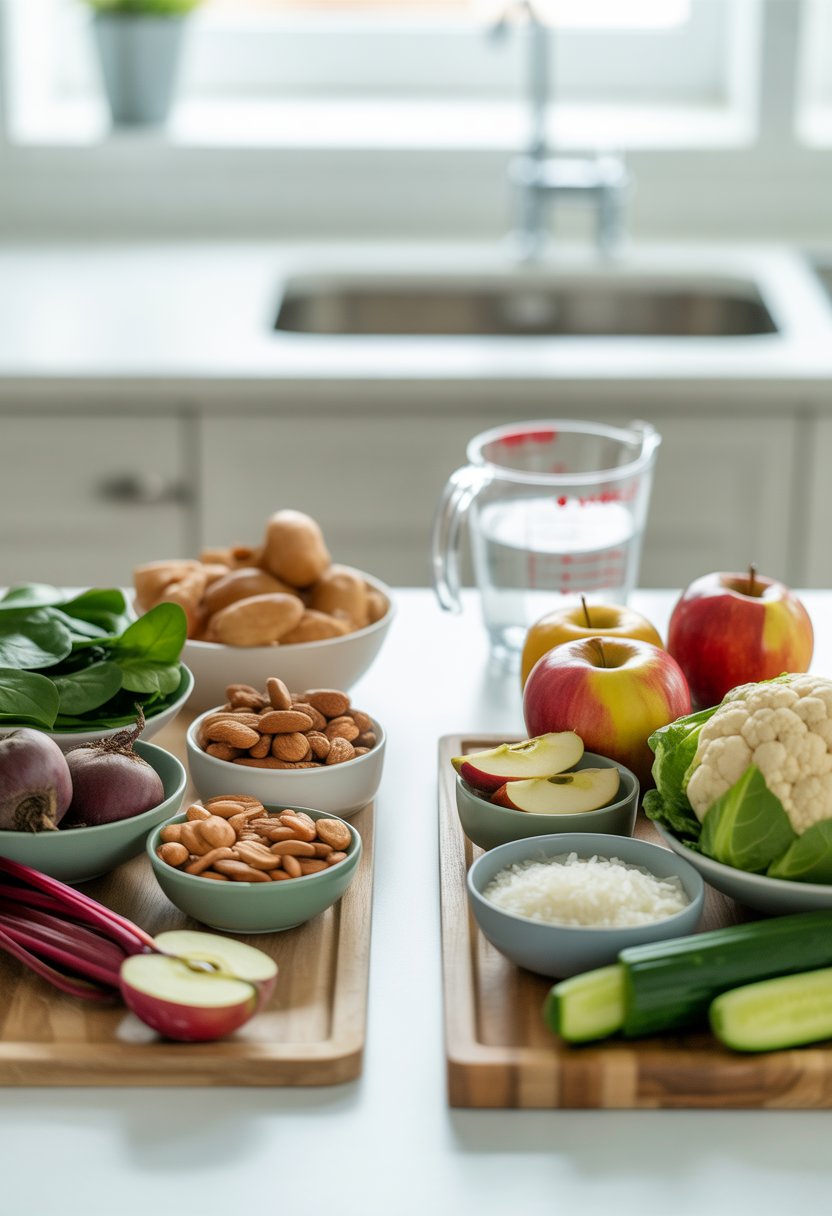
Your body’s reaction to oxalates depends on how much you eat and certain health factors. Eating too many high-oxalate foods can raise risks for kidney stones and affect things like bone health. Knowing how to balance oxalates with other nutrients is key to keeping your body running smoothly.
Risks of High Oxalate Intake
High oxalate intake can cause problems if your body can’t break it down well. Oxalates bind with calcium in your body, which can reduce the calcium available for your bones. This could lead to lower bone density over time.
Too much oxalate from food or supplements might also irritate your gut and cause discomfort. Some medications like ibuprofen can increase oxalate buildup in certain people, making kidney problems more likely.
If you have issues with metabolism or a history of kidney stones, high oxalate foods can be risky. It’s smart to watch your oxalate intake and talk to your doctor if needed.
Oxalates and Kidney Stone Formation
Most kidney stones are made of calcium oxalate crystals. When oxalate and calcium combine in your urine, they can form these crystals. Drinking less water or eating lots of oxalate-rich foods can raise your risk.
To lower kidney stone chances, aim to balance calcium and oxalate in your meals. Eating calcium with high-oxalate foods helps bind oxalate in your gut, so less reaches your kidneys.
Staying hydrated is important because it dilutes oxalates in your urine. You can help prevent stones just by drinking enough water throughout the day.
Best Practices for a Low Oxalate Diet
Start by learning which foods are high or low in oxalate. Leafy greens like spinach are high, while foods like cauliflower have low oxalate levels.
Try to pair high-oxalate foods with foods rich in calcium. This reduces oxalate absorption and lowers kidney stone risk. You don’t need to avoid all oxalate foods, just eat them in moderation.
Cook some foods by boiling or steaming to reduce their oxalate content. Also, avoid taking oxalate-rich supplements and manage medications that affect oxalate metabolism.
Drinking plenty of water daily is one of the easiest ways to manage oxalate levels and keep your kidneys healthy.
List of Low Oxalate Foods
Low-Oxalate Fruits
These fruits typically contain less than 5 mg oxalate per serving:
- Apples (peeled)
- Bananas
- Blueberries (small portions)
- Cantaloupe
- Cherries
- Grapes
- Honeydew melon
- Mango
- Papaya
- Peaches (peeled)
- Pineapple
- Plums
- Watermelon
Low-Oxalate Vegetables
These vegetables are also low in oxalates and can usually be consumed more freely:
- Cabbage (all types)
- Cauliflower
- Mushrooms (white/button)
- Zucchini
- Broccoli
- Kale (fresh, not cooked or concentrated)
- Lettuce (iceberg, romaine)
- Cucumber (peeled)
- Bell peppers (all colors)
- Turnips
- Radishes
- Peas (green, fresh)
- Green beans
- Brussels sprouts
